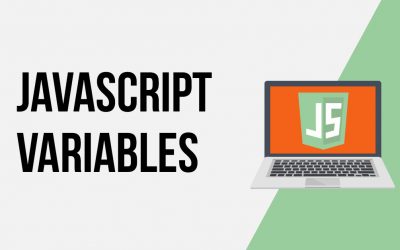BUSINESS DEVELOPMENT
Notebook
How To Speed Up WordPress Website
Website speed is crucial because it directly affects user experience, conversions, and search engine rankings. A slow-loading site can lead to users leaving before the page loads, with studies showing that 64% of mobile users expect a page to load in under 4 seconds. A significant 74% of users abandon a website if it doesn’t load within 5 seconds, and customer satisfaction drops by up to 16% with each second of delay. Faster loading times increase the likelihood of users completing desired actions, while a slow site can result in lost conversions and revenue. Moreover, Google prioritizes faster websites in search rankings, as they provide a better user experience and are easier to crawl and index. A fast website also conserves server resources, reducing costs and improving overall performance, allowing the site to handle more traffic efficiently.
Javascript Loops
Loops in JavaScript are used to repeatedly execute a block of code until a specific condition is met, which is especially useful when working with arrays to perform actions on each element. JavaScript provides several looping mechanisms, including `for` loops, which are ideal for situations where the number of iterations is known, and `while` loops, which are better suited for scenarios where the loop should continue until a specific condition is satisfied. Following best practices, using `for` loops for a predetermined number of iterations and `while` loops for ongoing conditions ensures clarity and efficiency in code execution.
JavaScript Functions
n JavaScript, functions are blocks of code designed to perform specific tasks and can be reused multiple times, making them a fundamental part of the language. Functions are defined using the function keyword, followed by a name and parentheses (), with the code to be executed placed within curly brackets {}. Parameters, listed inside the parentheses, allow you to pass data into functions for varied outputs. The return statement halts function execution and returns a value to the caller; functions return undefined by default unless specified otherwise. Additionally, JavaScript introduced arrow functions in ES6, offering a concise way to write function expressions using the => symbol. Arrow functions eliminate the need for the function keyword, and when containing a single statement, they don’t require return or {}, thus reducing lines of code. While arrow functions streamline syntax, they may also impact code readability.
JavaScript Conditional Logic
avaScript uses if statements to make decisions in code, executing a block if a condition is true and skipping further checks once a match is found. Use else if for additional conditions and else for code to run if all previous conditions are false. Switch statements allow for different actions based on various conditions, with case keywords defining possible matches. The default keyword specifies what to run if no cases match, and break exits the switch block to prevent further checks. The ternary operator (? 🙂 is a shorthand for if/else statements, allowing conditional assignments in one line, though it can make code harder to read if overused.
Javascript Arrays
In JavaScript, arrays are used to store multiple values within a single variable, making them ideal for managing lists of items. To create an array, you assign it to a variable using square brackets [] with items separated by commas, and remember to wrap string items in quotes. You can access array elements by their index number, starting with 0 for the first item. Nested arrays or multidimensional arrays are arrays that contain other arrays, allowing for more complex data structures.
Javascript Variables
Variables in JavaScript are containers for storing data, allowing you to access and manipulate information efficiently. You declare a variable using the var keyword, and it’s considered best practice to declare all variables at the beginning of a script. Each variable must have a unique name, and you assign values to variables using the = sign. If a variable is declared without a value, it defaults to undefined. While not required, it’s also a best practice to end each line of code with a semicolon (;) for clarity and consistency.
How Do I Add JavaScript To A Webpage?
To add JavaScript to a webpage, use the script tag. Older methods used `type` or `language` attributes, but these are no longer required since JavaScript is the default scripting language for browsers. For best practices, place your scripts in external `.js` files to maintain a separation of concerns between HTML and JavaScript. In WordPress, the correct way to include jQuery is by using the `jQuery` alias instead of `$` to avoid conflicts with other JavaScript libraries. Additionally, wrap your code in the `ready()` function to ensure execution only after the DOM has fully loaded.
Web Design Resources
Explore a comprehensive list of essential web design tools and resources that cater to designers of all levels. This collection includes top platforms for design, prototyping, and collaboration, such as Adobe XD, Sketch, and Figma, offering powerful features for creating stunning websites. You’ll find resources for typography, color schemes, and UI components, alongside tools for responsive design and accessibility testing. Enhance your workflow with code editors, version control systems, and online communities for inspiration and support. Dive into this curated list and elevate your web design projects with cutting-edge tools and resources.
OVER 100 GRAPHIC DESIGN & STOCK RESOURCES
Discover an extensive list of over 100 graphic design and stock resources that will elevate your creative projects. This comprehensive collection includes high-quality stock photos, illustrations, vector graphics, and design templates. Whether you’re a professional designer or just starting, these resources offer a wide range of tools to enhance your work. From popular platforms like Adobe Stock and Shutterstock to niche sites offering unique design assets, you’ll find everything you need to inspire and create stunning visuals. Explore this expansive list and unlock the potential of your design projects today!
The Principles of Animation
MY GIFT TO YOU!
Free Video Training Series
How To Design The Perfect Website.
32 PROVEN Headline Formulas
SEO Keyword Research Spreadsheet
Graphic Design Library
Web Design Tools & Resources













